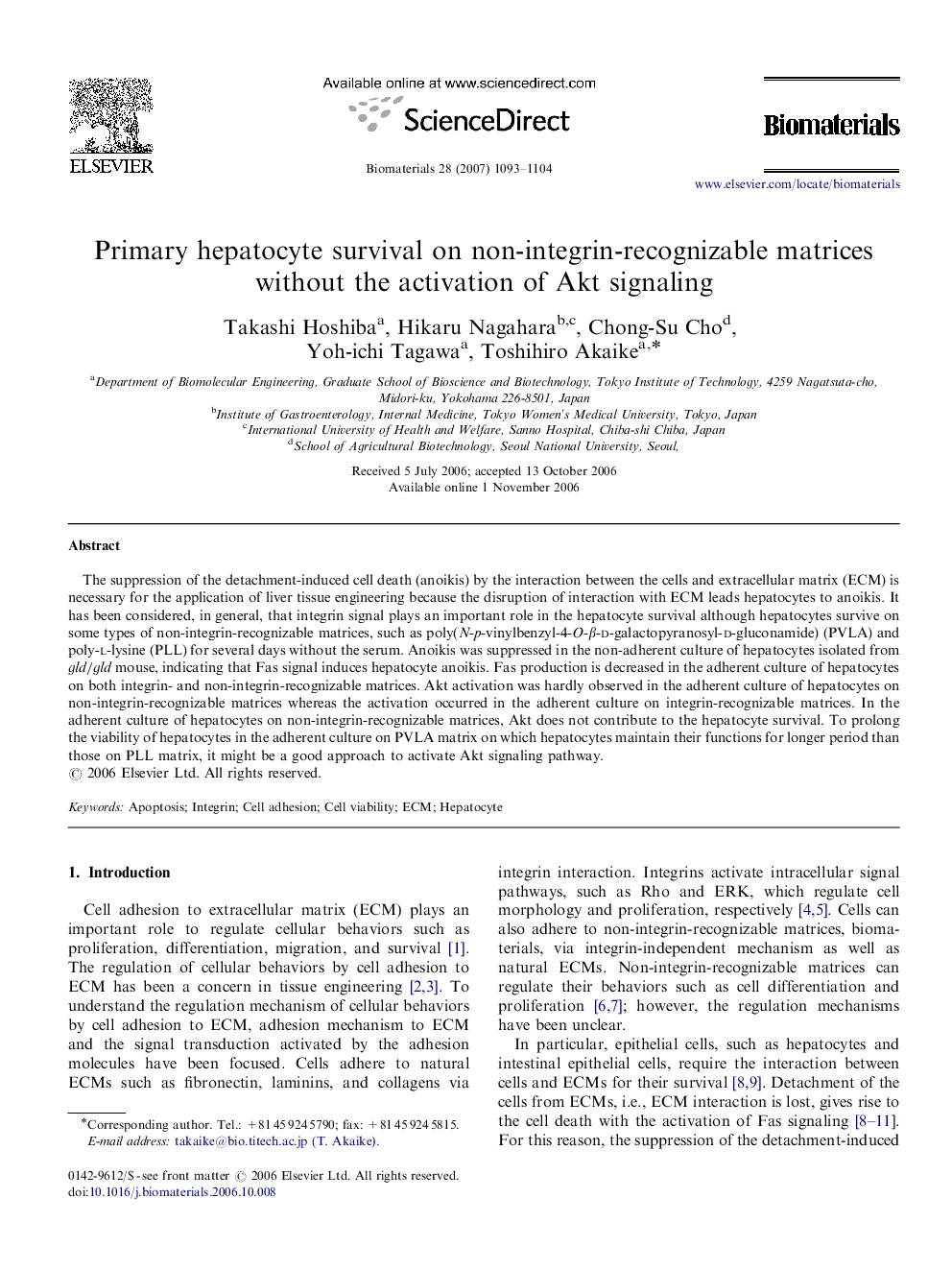| Article ID | Journal | Published Year | Pages | File Type |
|---|---|---|---|---|
| 10427 | Biomaterials | 2007 | 12 Pages |
The suppression of the detachment-induced cell death (anoikis) by the interaction between the cells and extracellular matrix (ECM) is necessary for the application of liver tissue engineering because the disruption of interaction with ECM leads hepatocytes to anoikis. It has been considered, in general, that integrin signal plays an important role in the hepatocyte survival although hepatocytes survive on some types of non-integrin-recognizable matrices, such as poly(N-p-vinylbenzyl-4-O-β-d-galactopyranosyl-d-gluconamide) (PVLA) and poly-l-lysine (PLL) for several days without the serum. Anoikis was suppressed in the non-adherent culture of hepatocytes isolated from gld/gld mouse, indicating that Fas signal induces hepatocyte anoikis. Fas production is decreased in the adherent culture of hepatocytes on both integrin- and non-integrin-recognizable matrices. Akt activation was hardly observed in the adherent culture of hepatocytes on non-integrin-recognizable matrices whereas the activation occurred in the adherent culture on integrin-recognizable matrices. In the adherent culture of hepatocytes on non-integrin-recognizable matrices, Akt does not contribute to the hepatocyte survival. To prolong the viability of hepatocytes in the adherent culture on PVLA matrix on which hepatocytes maintain their functions for longer period than those on PLL matrix, it might be a good approach to activate Akt signaling pathway.
